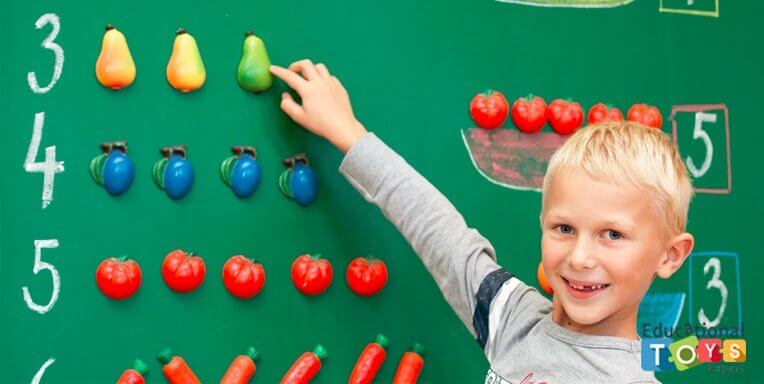What Is Dyscalculia? 7 ways to help your child deal with it

Dyscalculia is a learning disability in math that impairs an individual’s ability to understand and process numerical information in a typical way. Common symptoms of dyscalculia include difficulty with number sense, fact and calculation, and mathematical reasoning. This also involves difficulty in linking numbers and symbols to amounts and directions, making sense of money, or telling time using an analog clock.
People who have dyscalculia have trouble relating what numbers are to the quantity they represent. They may also have trouble recognizing patterns, an essential part of understanding how to do basic math operations. Children and teens with dyscalculia who struggle to understand numbers develop math anxiety.
What are the symptoms of dyscalculia?
The signs of a math issue can vary depending on what is causing it and how old your child is. If dyscalculia is to blame, the symptoms may change over time as your child uses math in different ways. Here are the symptoms to look out for at different levels of schooling to identify if your child has dyscalculia.
Preschool:
- Finds it hard to learn to count by 10s, up to 100
- Has trouble counting each object in a group
- Faces trouble understanding that a number can be used to describe any group with that amount in it—for example, knowing that 5 can be used for a group of 5 fingers, 5 bananas, and 5 cats
- Has difficulty recognizing and writing numbers up to 20
- Skips numbers when counting, long after other kids the same age are able to count in order (children typically can count to 100 by 1s and 10s at the end of kindergarten)
- Does not tend to recognize patterns and may not be able to sort items by size, shape or color
Primary School:
- Difficulty in counting 2s, 5s, and 10s
- Unable to mentally calculate basic addition and subtraction problems
- Difficulty in recognizing basic mathematical signs such as plus or minus
- Does not understand the concept of “more than” or “less than”
- Struggles to learn and remember basic math facts, such as 5 + 5 = 10
- Does not make the connection between related math facts or “fact families,” such as 5 + 5 = 10, so 10 ‒ 5 = 5
- Has trouble recognizing written numbers (also known as numerals)
- Still uses fingers to count instead of doing the calculation in the head
- Struggles to lineup numerals neatly in columns when solving math problems
- Does not know what is left and what is right
- Avoids games that involve strategies like checkers or Sudoku
High School:
1. Has difficulty using math in real life, including things like budgeting or doubling a recipe to make it for more people
2. Has trouble understanding maps and charts
3. Hesitates to participate in activities that require a good sense of speed and distance, such as running track or learning to drive.
How to diagnose dyscalculia:

If you suspect that your child has dyscalculia, the process can start from school, rather than with a doctor. Begin by talking with your child’s teacher. She should be able to tell you how well your child is doing in math, and how she compares to her peers. If your child’s teacher is not familiar with dyscalculia, do not get discouraged. The disorder is not well known or understood, and many teachers do not know the signs.
Though schools and private testing centers use different approaches to determine dyscalculia, any good test will compare a child’s math ability and skills to those of other children his age. Every child with dyscalculia has different strengths and weaknesses; a competent professional will recognize this and try a combination of tests to identify the specific areas where your child struggles. Common tests for dyscalculia include:
1. Counting:
One of the most common tests is to ask your child to practice counting backward, counting dots, or completing other straightforward exercises designed to reveal how the child relates to numbers and groups them together. One common version of this test is called the Neuropsychological Test Battery for Number Processing and Calculation in Children, or NUCALC.
2. Drawing shapes:
Visual-spatial skills play a huge role in math, and copying shapes or drawing them from memory is a good way to measure a child’s challenges in this area.
3. Talk to your child’s teacher:
Your child’s teacher can best share what the teacher has observed in class. You can ask the teacher for a list of the skills that students are expected to learn by the end of the school year. That can give you a sense of what your child needs help with and how far behind she may be.
4. Talk to a specialist:
Educational psychologists who focus on learning issues are trained to give specific tests that look at how children think and learn. These tests can help pinpoint which areas a child is struggling with.
Reasons for weakness in math among children:
- The inability of a child to visualize mathematical concepts
- Rote learning methods where a child is given formulas and statements to learn by heart
- Labeling a child as “weak in math”
- The stress of scoring high marks
- A fixed mindset of bucketing children into fixed ability categories instead of a growth mindset framework which implies that every child’s ability can grow, and grow significantly
Math is included in many parts of life, even for young children. So having math related issues can affect their lives. However, with proper identification and educational strategies, children who experience dyscalculia can go on to be successful in school and in their personal lives.
7 ways to deal with dyscalculia:

1. Make math a game:
Practicing math skills do not have to feel like homework. Doing it in a less pressured way may improve your child’s understanding of numbers and reduce math anxiety.
2. Take help of technology:
Kids who have trouble with math facts and concepts can benefit from apps that boost math skills. There are various apps that use games and puzzles that aid learning math. Other types of assistive technology can help too.
3. Observe and take notes:
Observing your child’s behavior and taking notes on when he or she has difficulties can help you identify patterns and specific issues that you can begin to work on. Your notes will also be helpful when you talk to your child’s teacher, doctor or other professional.
4. Connect with other parents:
While you may feel you are the only family going through this issue, there are many other parents who are going through the same struggle. Connecting with these parents who know what you are going through and share insights and strategies can be a great help and morale booster.
5. Encourage the child to explore and make mistakes:
Research has shown that even when children make mistakes, they learn. In fact, in some cases, they might learn more. Children are taught elaborate algorithms and then expected to apply them flawlessly. We should encourage children to learn math by exploring ideas rather than memorizing them.
6. Encourage the child to ask questions and clear their doubts:
There are many instances where students build an aversion to mathematics because their curiosity regarding math was not addressed properly by their school teachers. Because teachers are time-pressed to complete the syllabus, there is a tendency to skim through concepts without spending a significant amount of time on any concept. This reason is one of the biggest contributors to a child’s eventual struggle with math.
7. Have perspective and patience:
In your daily interactions with the child, constantly reinforce a vibe of positivity around math. Remember that for a deep understanding of math concepts, then why is more important than the what. Encourage the child to approach math from a why-framework rather than a what-framework. Do not impose unrealistic or unreasonable expectations on the child just to satisfy yourself.

Closing Thoughts:
Helping a child struggling with math to get back on track is not an easy job. Understanding what is behind your child’s trouble with math is the best way to get support for him or her. The more you know, the better able you will be to help build math skills and confidence. With the right approach, spectacular transformations are possible.




